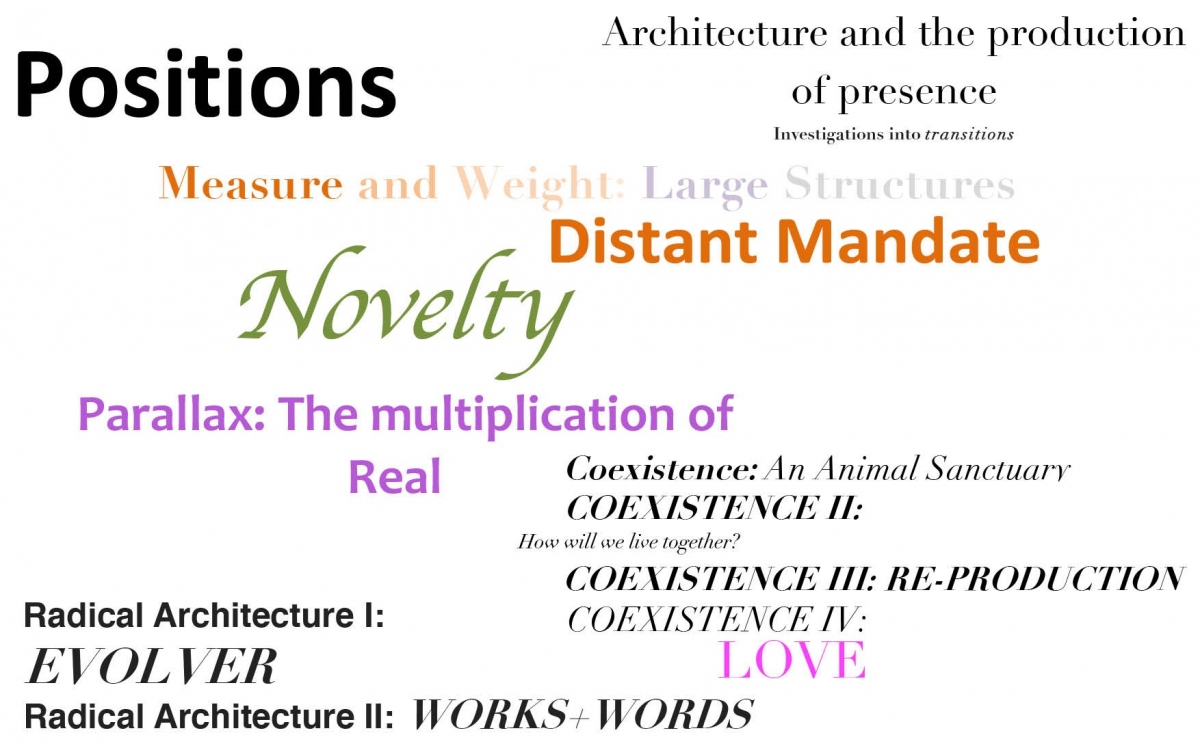Studio Positions

Credits: 24p
Teachers: Lisbeth Funck and Matthew Anderson
Studio Positions offers courses in architectural design, organised in series over 4 semesters. The course series provide students with the opportunity to investigate a personal architectural interest and engage deeply with a chosen theme, both intellectually and formally, through an architectural project. Contemporary societal discussions, directions in art, philosophy, sociology and ecology, and architectural discourses provide the framework for architectural projects that are developed individually or in collaboration through discussions, lectures, workshops, group readings, and study trips.
Each semester is organized in four phases, where projects are developed continuously with the following progression:
- Development of an architectural concept
- The social: Introduction of scale, materiality, structure, and activity.
- The general and the specific: Spatial and constructive principles
- An architectural project
Each course series provides an arena for students to concentrate and develop their own position through an individual architectural language, inspiring them to delve into the social and cultural challenges that mark our time, and reflect on how these challenges have influenced our relationship to architectural space and how we interact with it.
Studio Positions aims at investigating new and fundamental approaches to architecture that facilitate more liveable (sustainable) futures. We are concerned not only with how architecture is made, but also the presence of architecture and the aesthetic experience it produces.
We understand the term Byggekunst (Building Art) as it refers to architecture’s fundamental task, which is to bring together the technical, the measurable aspects of architecture with the artistic, the sensuous, through a holistic approach to architectural design. Studio Positions pedagogy emphasizes open dialogue as a prerequisite for a deeper understanding of the fundamental premises of architecture, and thus our ability to position ourselves within the continuous architectural discourse.